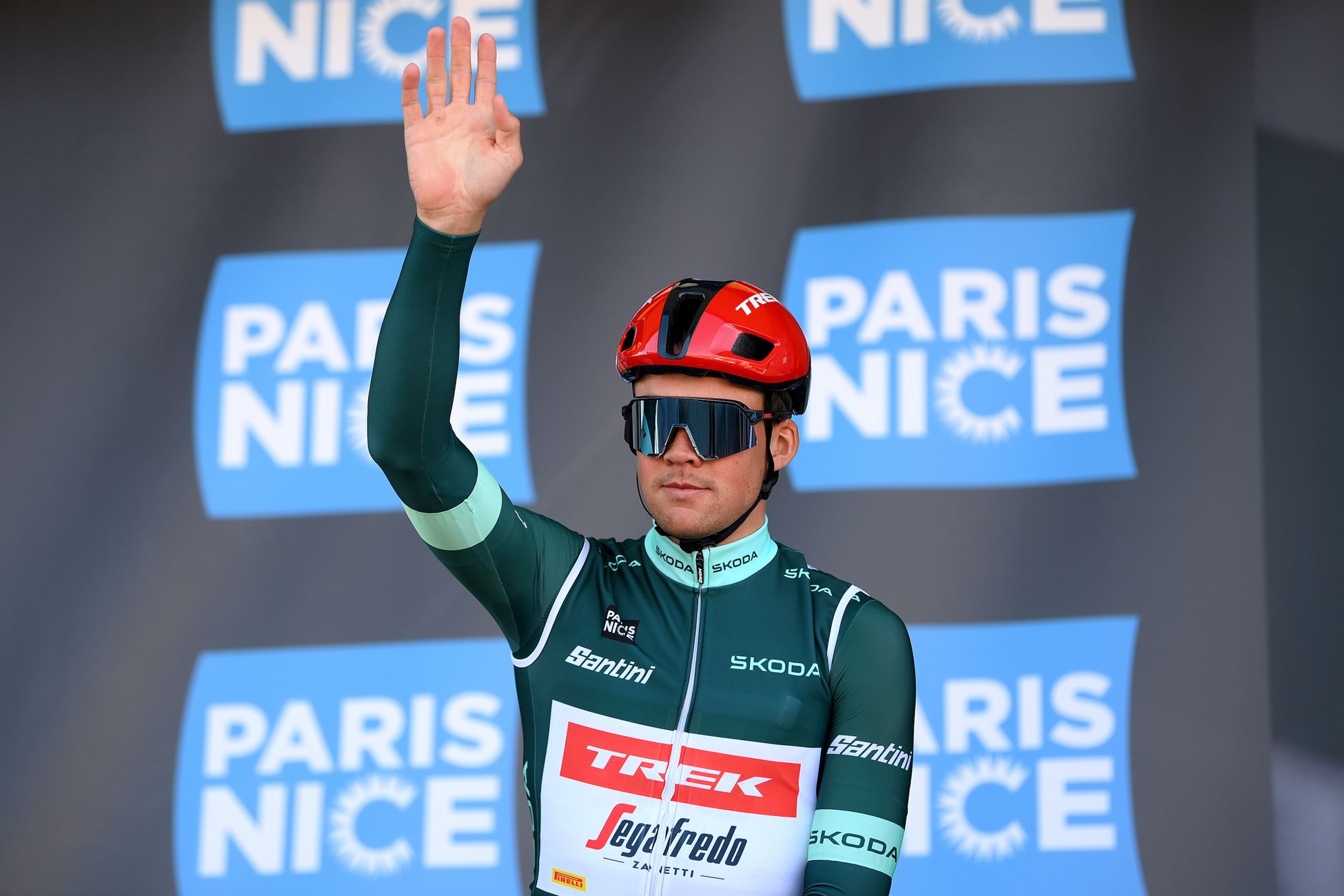
France has a strong art history of colours. Anyone who has looked at the works of the Impressionists, or the Fauvists, or even the 20th century work of the Nice-born artist Yves Klein can attest to bright colours becoming more important than realism in French art.
The Tour de France, one of the country's greatest exports, also has a strong history of colour. The maillot jaune, the yellow jersey, is iconic, known to people even beyond cycling as *the* cycling kit. Similarly, the maillot à pois, the polka-dot jersey, has a reach well beyond 21 days every summer in France.
This is why it is dramatic that one of the emblematic colours of the Tour - green - has a new shade this year. It was debuted at Paris-Nice last week, and will be seen across ASO's French stage races, which means the Critérium du Dauphiné, but also, crucially, the Tour de France. It is yet to be decided if it will apply to the Tour de France Femmes.
While the week of action at Paris-Nice was thrilling and enthralling, it is unlikely that the green jersey's new colour has reached the casual fan, the person that would only normally tune into cycling on a day in July. When they switch on stage two from Vitoria-Gasteiz to San Sébastián this summer, they will be in for a shock, as the points jersey has changed from its traditional lime green to a dark colour, think South Africa rugby or Plymouth Argyle or Green Bay Packers.
It has proved controversial with vocal fans on social media - an important clarification, because it might turn out those who are into cycling a little less don't care - both because of the look, and because it is difficult to pick out in the peloton from above.
If anyone tells me the brand-new green jersey is visible, I'll just show them this picture. 🤷♂️Perfect example of changing a jersey according to the colours of a sponsor, making it worse for spectators. #ParisNice pic.twitter.com/Q5l3P3OGLGMarch 6, 2023
It has moved to a darker shade at the behest of sponsors Skoda, who have been on the jersey since 2015. It appears the company has rebranded to the new colour, so must the jersey that bears its name.
Speaking to riders this week, it was difficult to pick up a groundswell of opposition, as there has been from fans.
"I like it," Trek-Segafredo's Mads Pedersen told Cycling Weekly, while wearing the aforementioned kit. "I don't care, Skoda sponsor the jersey, and they decide what they want on the jersey. I think the problem people have with the new colours is because the old one was there forever.
"Now it's changing, and of course that's something people have to get used to. To be honest, I think it's a nice colour and it's a nice new thing. Already now. It is how it is, it looks classy and more modern. I don't mind it, it's pretty cool. Maybe I would have a different opinion if they changed the yellow jersey, but this one is fine."
Equally, another man who has donned the green jersey in the past, Alexander Kristoff of Uno-X, does not particularly mind: "I liked the old one, but maybe you just have to get used to it and after a few days it is fine."

There is a hint of opposition from Bahrain-Victorious' Fred Wright: "I think on Sam [Bennett], with the Bora kit it looked really similar, but I think Mads pulled it off alright in the Trek kit.
"I think leaders' jerseys should be as bright and colourful as possible, so maybe it should be the lime green. I like the old school."
It's similarity with the Bora-Hansgrohe kit, a shade of dark green quite a lot like the points jersey, has already caused problems for fans trying to pick out riders. Perhaps the German team will change their kit for the Tour de France, as they have in the past, going to white.
It is not the only kit clash in the peloton - Trek-Segafredo, Bahrain-Victorious and Ineos Grenadiers all look pretty much the same from above - but it is a manufactured one.
"I'm incredibly colour blind anyway, so I find it hard to distinguish jerseys as it is," Bora's Ryan Mullen said. "From a distance, it doesn't look any different to our jersey, in my eyes. Personally, I prefer the old one, the Kermit green. I think it was more of a popping colour, now it's just a dirty milky green."
The green jersey's colour is not the only thing that has changed due to sponsorship.

Harder to spot on television, but still important both for the viewer and the fans watching, is the combativity prize, awarded daily at ASO's French races.
In living memory, it has always been red, and most recently sponsored by Antargaz, the French fuel company, but now it will be gold, because it is sponsored by Century 21, a nationwide chain of estate agents. Not 21st Century Fox.
As seen on Kobe Goossens, the Intermarché-Circus-Wanty rider, the effect is now a bit more muted, with the gold numbers harder to pick out, although they do look very different from the ordinary white. However, it might prove difficult to distinguish from the yellow numbers worn by the team leading that classification at the Tour, but then they do wear yellow helmets too.
Goosens was cool with it: "It's special, so it's still good for me."
However, Wright was less complimentary: "They should always be red. That's rubbish, they should be flames."
Change is coming. Be ready.

